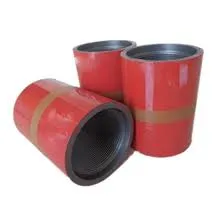- Afrikaans
- Albanian
- Amharic
- Arabic
- Armenian
- Azerbaijani
- Basque
- Belarusian
- Bengali
- Bosnian
- Bulgarian
- Catalan
- Cebuano
- Corsican
- Croatian
- Czech
- Danish
- Dutch
- English
- Esperanto
- Estonian
- Finnish
- French
- Frisian
- Galician
- Georgian
- German
- Greek
- Gujarati
- Haitian Creole
- hausa
- hawaiian
- Hebrew
- Hindi
- Miao
- Hungarian
- Icelandic
- igbo
- Indonesian
- irish
- Italian
- Japanese
- Javanese
- Kannada
- kazakh
- Khmer
- Rwandese
- Korean
- Kurdish
- Kyrgyz
- Lao
- Latin
- Latvian
- Lithuanian
- Luxembourgish
- Macedonian
- Malgashi
- Malay
- Malayalam
- Maltese
- Maori
- Marathi
- Mongolian
- Myanmar
- Nepali
- Norwegian
- Norwegian
- Occitan
- Pashto
- Persian
- Polish
- Portuguese
- Punjabi
- Romanian
- Russian
- Samoan
- Scottish Gaelic
- Serbian
- Sesotho
- Shona
- Sindhi
- Sinhala
- Slovak
- Slovenian
- Somali
- Spanish
- Sundanese
- Swahili
- Swedish
- Tagalog
- Tajik
- Tamil
- Tatar
- Telugu
- Thai
- Turkish
- Turkmen
- Ukrainian
- Urdu
- Uighur
- Uzbek
- Vietnamese
- Welsh
- Bantu
- Yiddish
- Yoruba
- Zulu
coupling tube fitting
Understanding Coupling Tube Fittings A Comprehensive Overview
Coupling tube fittings play a vital role in the realm of fluid transportation and mechanical assembly. These fittings are designed to connect two sections of tubing, enabling the smooth flow of liquids or gases while ensuring a secure and leak-free connection. Used extensively in various industries such as plumbing, automotive, and manufacturing, coupling tube fittings come in an array of designs, materials, and sizes to accommodate different applications and requirements.
Types of Coupling Tube Fittings
1. Compression Fittings These fittings use a compressive force to create a secure seal. When the nut is tightened, it compresses a ferrule around the tubing, making it an ideal choice for applications where vibration or movement is present, as it provides a robust connection.
2. Push-to-Connect Fittings Also known as quick-connect fittings, these allow for easy connection and disconnection without the need for tools. Simply pushing the tube into the fitting creates a seal, making them highly convenient for applications requiring frequent assembly and disassembly.
3. Welded Fittings In high-pressure systems, welded fittings offer exceptional strength and durability. By welding the fittings directly to the tubing, a more permanent connection is established, which is crucial in applications involving extreme temperatures or pressures.
4. Flared Fittings These involve flaring the end of the tubing and then securing it with a nut. Flared fittings are commonly used in refrigeration and automotive applications because they can endure high-pressure fluid flow.
Material Considerations
The choice of material for coupling tube fittings significantly impacts their performance and durability. Common materials include
- Copper Known for its excellent conductivity and resistance to corrosion, copper fittings are widely used in plumbing and HVAC systems
.coupling tube fitting

- Stainless Steel Renowned for its strength and resistance to oxidization, stainless steel fittings are ideal for high-pressure and high-temperature applications, as well as in food and pharmaceutical industries.
- Plastic Lightweight and resistant to corrosion, plastic fittings are often utilized in chemical applications. Although they can be limited in terms of pressure capacity, they offer a cost-effective solution for non-critical applications.
Applications of Coupling Tube Fittings
Coupling tube fittings are indispensable in various sectors
- Transportation In the automotive industry, effective fluid transfer is critical. Tube fittings are used in brake systems, fuel lines, and hydraulic systems, ensuring safe and reliable operations.
- Manufacturing Many manufacturing processes require precision fluid control, making tube fittings essential in pneumatic and hydraulic systems.
- Construction Plumbing systems rely heavily on coupling fittings for water supply lines, drainage, and gas distribution, ensuring compliance with safety and efficiency standards.
Conclusion
In summary, coupling tube fittings are critical components in a wide array of industrial applications, providing secure connections for fluid and gas transfer. Understanding the different types and materials available can help engineers and technicians make informed decisions that enhance system performance and longevity. As technology evolves, so too will the designs and functionalities of these fittings, leading to even greater efficiencies and capabilities in fluid management systems. Whether in manufacturing, construction, or transportation, coupling tube fittings continue to play a key role in facilitating the smooth operation of countless systems worldwide.
-
Tubing Pup Joints: Essential Components for Oil and Gas OperationsNewsJul.10,2025
-
Pup Joints: Essential Components for Reliable Drilling OperationsNewsJul.10,2025
-
Pipe Couplings: Connecting Your World EfficientlyNewsJul.10,2025
-
Mastering Oilfield Operations with Quality Tubing and CasingNewsJul.10,2025
-
High-Quality Casing Couplings for Every NeedNewsJul.10,2025
-
Boost Your Drilling Efficiency with Premium Crossover Tools & Seating NipplesNewsJul.10,2025







